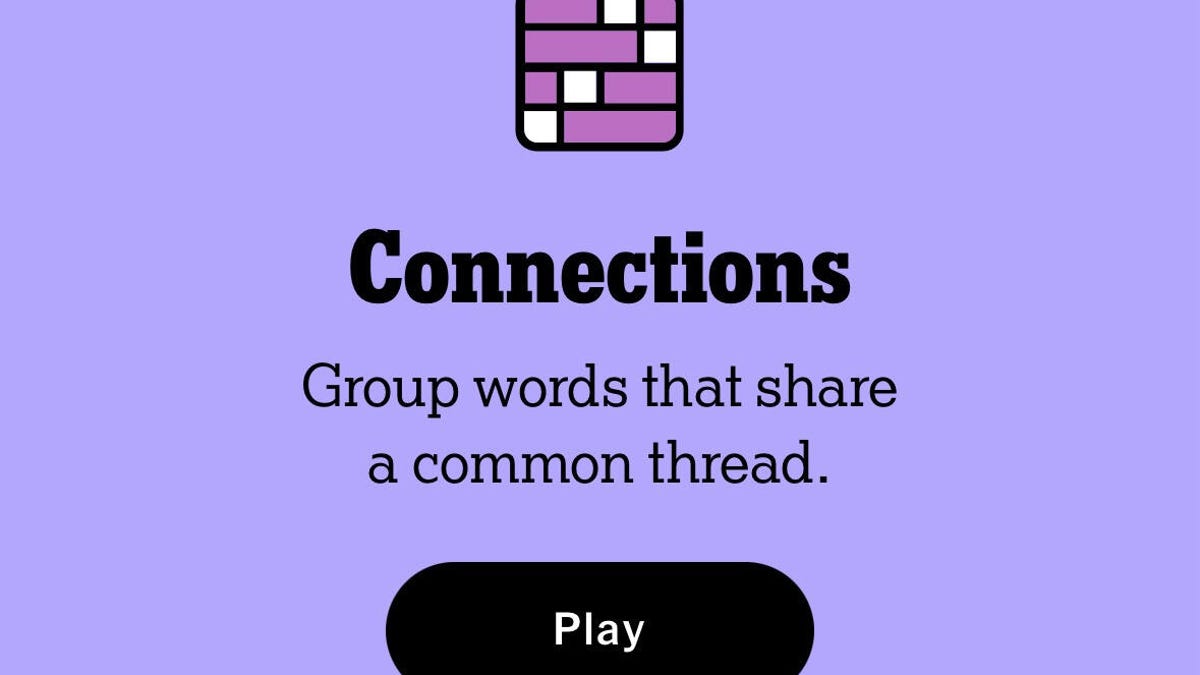Daily challenges like “Connections” have enthralled puzzle aficioners around. Players check in every day asking the same burning question: “connections answers for today” or “connections answers today.” This book is meant to help you through the process of overcoming today’s puzzle and future difficulties both, regardless of your level of experience or whether you’re a novice seeking a foothold or a seasoned veteran ready to hone your techniques.
Knowing the Game
The brain-teasers “connections” ask you to find ties among a collection of apparently unconnected phrases or images. The goal is straightforward in theory but difficult in practice: you have a collection of objects to arrange according to a secret theme or link. Connections calls for a combination of pattern recognition, lateral thinking, and occasionally even cultural or contextual knowledge unlike some puzzles depending just on vocabulary or math.
What Differentiates Connections?
Dynamic themes: Every daily problem is different. While some puzzles could rely on commonplace themes—such as colors, emotions, or common phrases—others might find inspiration in historical or popular culture references.
Group Classification: Correct groupings of the objects present a difficulty. Usually, you would have to find four groups—each with a predetermined quantity of objects—then find the common thread connecting each group.
Some puzzles may have several legitimate grouping paths, but only one will lead to the whole answer. As you consider many options, this heightens the thrill and difficulty.
How to Handle Today’s Challenge
1. should begin with a quick survey.

Spend some time looking over all the text or pictures the puzzle presents when you first view it. You will see some clear parallels rather often. Look for:
Repetitions in word type: Exist any noun related to a common field (food, sports, technology)?
Word Length and Structure: Sometimes the way the words are structured suggests categories. When combined with lengthier, compound concepts, short words may conceal a relationship.
Some terms indicate famous phrases or well-known groups right away (for instance, “apple” could refer to technology, fruit, or even popular culture).
2. Sort under Category
After you have a general picture, start arranging objects according to seemingly relevant categories. Think about these ideas:
Try to find if a set of objects has a theme. If numerous words can precede or follow the same term, for example, that suggests a relationship.
Sometimes the relationship is functional rather than conceptual. Words could be arranged, for instance, according to their purposes in daily tasks.
Consider cultural or contextual links in groupings. Depending on the other words around it, a term like “Mercury” could bring to you mythology, chemistry, or space.
3. Review Many Alternatives
One should not fix on one group too fast. rather:
List all the conceivable links either physically or just conceptually. If a word might fit several categories, note all the connections.
Test each group by mentally modeling the puzzle: if you designate a word for a category, do the other words in that prospective group fit together nicely?
The ideal groups are those in which the link is unequivocal and evident. Review your strategy if a group seems coerced or if some objects seem to “spill over” into other categories.
4. Make use of lateral thought.
Sometimes the right response isn’t the straight forward one. Lateral thought is absolutely essential:
Think outside the box for homonyms, analogies, or idioms that might unexpectedly link objects.
If the puzzle calls for complicated words or phrases, break them down. Every component of the compound word perhaps relates to a distinct group.
Some problems depend on well-known historical events or cultural allusions. One can benefit from keeping a broad knowledge base.
5. Double-check and Verify
Following initial groupings:
Review every group by looking at your categories to find if any term seems out of place. Ask yourself: Does another relationship fit this word more suitably?
Sometimes talking about your ideas with a friend or on a puzzle forum will help you find any flaws in your thinking. If you are engaged in a live challenge, though, be careful with spoilers.
If you find yourself stuck, a few minutes away will help you to clear your head. Coming back from a different angle could highlight links you missed earlier.
Techniques to Find Today’s Solutions
A. Patterns Identification
Solving Connections puzzles requires first recognition of patterns. Here’s how you improve your pattern-recognition ability:
Regularly working through various word and pattern puzzles will help your mind identify repeating themes.
Keep a mental, or physical, notebook. List organizations or relationships you have already come across. You might spot repeating trends over time.
Review earlier puzzles and note how particular words were arranged. Although every day is different, recurring motifs usually surface.
B. Keyword Linkage
Given many players look for “connections answers today,” keyword association is obviously quite important:
Create a mental map with the central node one of the words and branch out with all the associations that spring to mind. You may discover that a number of words agree on one secondary phrase.
Examining synonyms and antonyms of the given terms helps you. Sometimes the link is in opposites or related words rather than straight forward language.
C. Making Use of Outside Information
Certain problems mostly rely on scientific, historical, or cultural knowledge:
Maintaining knowledge of current events, popular culture, and even trivia will help you. In the framework of a recent trend or historical event, an apparently obscure word could suddenly make sense.
Though hardly every player will have encyclopedic knowledge, having access to a dictionary or thesaurus will inspire fresh thoughts when you’re stuck.
D. Time Management
Daily puzzles strike a careful mix between speed and accuracy:
If you are training or competing, think about allowing yourself a specific time limit to create groups before stopping to review.
Steer clear of overanalyzing; sometimes the most direct link is the right one. If a group appears obviously natural, trust your instincts.
Stay calm; frustration might skew your perspective. Making logical connections calls for a level head.
Typical Mistakes and Techniques to Prevent Them
https://www.cnet.com/a/img/resize/3700b535a581aeb0b415d86dc14e75e505865f55/hub/2024/03/20/ 05262648-fa2a-4fbd-bb08-8dd63a637dbe/connections-nyt-game-img-4345-jpg.jpg?auto=webp&fit=crop&height=675&width=1200
05262648-fa2a-4fbd-bb08-8dd63a637dbe/connections-nyt-game-img-4345-jpg.jpg?auto=webp&fit=crop&height=675&width=1200
Even seasoned puzzles can trip people. These are some typical mistakes and techniques for avoiding them:
1. Stressing a Relationship
Pitfall: If you want the puzzle to match a predetermined idea, you could be tempted to create a connection even if it seems forced.
Every word in a group should naturally fit the relationship. A term that appears forced could belong somewhere else.
2. Ignoring minor hints
Focusing too much on the apparent could cause you to overlook a subtle link.
Take time to give less obvious links some thought. Sometimes the link is in the secondary meaning or even sound of a word.
3. Getting mired in one thought process
You might dismiss other choices and get obsessed on one possible grouping.
Always consider alternate groups constantly. Review your groups often; if an idea doesn’t work out, don’t hesitate to toss it.
4. Ignoring the Elimination Process
Pitfall: Not removing obviously incorrect solutions will overcomplicate the problem.
Often it’s preferable to start with removing the outliers. You can reduce your choices for the final words by removing terms that obviously do not fit particular topics.
Perfect Practice Makes Difference
When it comes to sharping your puzzle-solving abilities, practice is the only substitute. Here are some more ways to keep getting better:
Engage with daily challenges even outside of the Connections game. Your intellect will be sharpened by other challenges including crossword puzzles, word searches, or even logical puzzles.
Puzzle Communities: Think about joining internet forums or organizations where aficionados exchange ideas, techniques, and occasionally review difficult problems. If you’re working on today’s puzzle on your own, just be careful with spoilers.
Create your own little puzzles out of words from your daily life. This practice can allow your brain to find connections in the everyday objects.
Thought Notes on “Connections Answers Today”
Usually, you are searching for a little push in the correct way when you search for “connections answers for today” or “connections answers today. Although it can be easy to look for quick solutions, keep in mind that the real delight of puzzles is their difficulty and gratification upon your own solving. The techniques listed above are meant to enable you to think critically and independently create those links.
Recall, every puzzle offers a teaching moment. Eliminating wrong responses, generating probable groupings, and finally breaking the code will help you over time even if you do not arrive at the solution immediately. Keep on; soon you will find that the links you formerly battled with will come naturally.
Think about your mental process as you keep working on these riddles. Which techniques worked best? Where did your get caught? Whether you are solving today’s problem or getting ready for tomorrow’s challenge, ongoing development depends on this kind of introspection.
In essence,
The “Connections” puzzle tests your brain to see beyond the obvious rather than merely your vocabulary or trivia skills. The tools and ideas in this book will help you to confidently solve the puzzle of today. Recall that the path to the proper link is just as fulfilling as the solution itself.
You can negotiate even the toughest problems by emphasizing rapid pattern detection, testing several groups, and applying lateral thinking. And even although you might be looking for “connections answers today,” let this guide remind you that the abilities you acquire will help you to solve every future puzzle a little more easily.
Meta Description (within 140 characters):
Unlock today’s Connections problem with professional tactics, advice, and insights for mastering word groups and improving your puzzle-solving ability!
